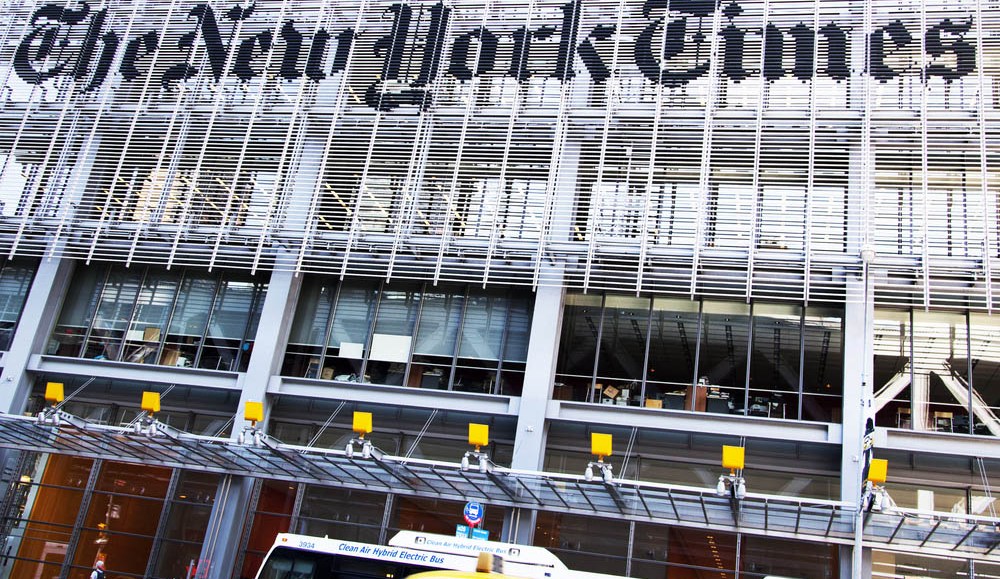Save 50% on a 3-month Digiday+ membership. Ends Dec 5.

If you’re looking for journalism that explains the complexities of politics, policy and the world in general, there’s no shortage of content out there for you. There are startups like Vox Media’s Vox and ESPN’s FiveThirtyEight, and other news outlets adding to their existing sites, like The Washington Post with Wonkblog and a forthcoming policy initiative under Jim Tankersley.
Now The New York Times is jumping into the fray with The Upshot, its new politics and policy website, launching Tuesday. In a Facebook post, Leonhardt said The Upshot would build on the Times’ existing journalism by helping people understand the news in a plain-spoken way and translating the vast amounts of data being produced. Digiday asked Leonhardt to explain why we need another explainer site.
Some might say the Times has ceded ground to other explainer sites that are already out there. How is The Upshot going to catch up to others like Fivethirtyeight and Vox?
I don’t think this is about a competition between these sites to see which will emerge victorious. There is more than enough room for any site that is providing journalism of this kind to succeed. Given there’s a hunger for conversational journalism and database journalism, as long you’re giving people reporting that’s good, you’re going to succeed.
Why have a separate site rather than build The Upshot into The Times itself?
When you’re part of an organization that is extremely successful for a long time and you’re trying to do something new, there are a lot of advantages to having a separate group. You can flip the process. Arthur [Sulzberger] and Jill [Abramson] have told us to push these boundaries. Everybody is aware we have to experiment. The mistake longtime legacy organizations make is, they’re too afraid to innovate.
You say the idea behind the site is that people don’t understand the news as well as they’d like. Is that a failure or shortcoming of news outlets like the Times to adapt their storytelling approach to the speed and complexity of the news?
I think we’re adapting it better than everyone, but we need to change. Readers want journalism that talks to them in the same voice that we use with their own colleagues and friends. This has been a slow process.
Right, you still have courtesy titles at the Times…
We talked about courtesy titles. And we are going to use courtesy titles. Maybe I’m old fashioned enough. I think it’s something people expect when they come to The New York Times. As for profanity, one of our pieces had a word there was a debate about. It was relevant enough that we decided to keep it. There are grey areas within Times Style.
Ad position: web_incontent_pos1
Vox took some heat for veering into fluffy content like its explainers on the Internet and Gwyneth Paltrow. Can you stick to straight policy and serious news, given the reality of the Internet and the need for massive traffic to sustain an ad-based business?
The advertising realities don’t worry me at all. There is an audience for serious and important topics. Yes, there is also an audience for unserious and mindless fun. Even when we’re going to have some fun, it’s going to be about topics that matter to people’s everyday lives. I feel absolutely no pressure to drive traffic by giving people candy.
More in Media

What publishers are wishing for this holiday season: End AI scraping and determine AI-powered audience value
Publishers want a fair, structured, regulated AI environment and they also want to define what the next decade of audience metrics looks like.

Digiday+ Research Subscription Index 2025: Subscription strategies from Bloomberg, The New York Times, Vox and others
Digiday’s third annual Subscription Index examines and measures publishers’ subscription strategies to identify common approaches and key tactics among Bloomberg, The New York Times, Vox and others.

From lawsuits to lobbying: How publishers are fighting AI
We may be closing out 2025, but publishers aren’t retreating from the battle of AI search — some are escalating it, and they expect the fight to stretch deep into 2026.
Ad position: web_bfu

